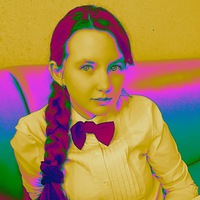
ДАЮ 35 БАЛОВ!!! СЕРЕД СПОЛУК ЗНАЙТИ З ЙОННИМ ЗВ’ЯЗКОМ НАПИСАТИ МЕХАНІЗМ УТВОРЕННЯ УТВОРЕННЯ
ОДНІЄЇ З НИХ СЕРЕД СПОЛУК ЗНАЙТИ З ЙОННИМ ЗВ’ЯЗКОМ НАПИСАТИ МЕХАНІЗМ ЇХ УТВОРЕННЯ Н2 О3 SO3 P2O5 СО К2S H2O S8 ZnCl2 HBr Fe2O3 CaO NO 0
0
 0
0
Ответы на вопрос
 Внимание! Ответы на вопросы дают живые люди. Они могут содержать ошибочную информацию, заблуждения, а также ответы могут быть сгенерированы нейросетями. Будьте внимательны. Если вы уверены, что ответ неверный, нажмите кнопку "Пожаловаться" под ответом.
Внимание! Ответы на вопросы дают живые люди. Они могут содержать ошибочную информацию, заблуждения, а также ответы могут быть сгенерированы нейросетями. Будьте внимательны. Если вы уверены, что ответ неверный, нажмите кнопку "Пожаловаться" под ответом.

It looks like you're asking about the mechanism of formation for several compounds. Let's break it down step by step.
Mechanism of Formation for Compounds:
The compounds you've listed are: - H2O - SO3 - P2O5 - CO - K2S - S8 - ZnCl2 - HBr - Fe2O3 - CaO - NOMechanism of Formation for Each Compound:
1. H2O: - Water (H2O) is formed by the combination of hydrogen and oxygen atoms through a covalent bond. - The mechanism of formation involves the sharing of electrons between the hydrogen and oxygen atoms to form a stable molecule of water. - The reaction for the formation of water can be represented as: 2H2 + O2 → 2H2O [[1]].2. SO3: - Sulfur trioxide (SO3) is formed through the reaction of sulfur dioxide (SO2) with oxygen in the presence of a catalyst. - The mechanism involves the oxidation of sulfur dioxide to sulfur trioxide in the presence of a catalyst such as vanadium(V) oxide. - The reaction for the formation of sulfur trioxide can be represented as: 2SO2 + O2 → 2SO3 [[2]].
3. P2O5: - Diphosphorus pentoxide (P2O5) is formed by the combustion of phosphorus in a plentiful supply of dry air. - The mechanism involves the reaction of phosphorus with oxygen to form diphosphorus pentoxide. - The reaction for the formation of diphosphorus pentoxide can be represented as: 4P + 5O2 → 2P2O5 [[3]].
4. CO: - Carbon monoxide (CO) is formed through the incomplete combustion of carbon-containing compounds. - The mechanism involves the oxidation of carbon to form carbon monoxide. - The reaction for the formation of carbon monoxide can be represented as: C + 1/2O2 → CO [[4]].
5. K2S: - Potassium sulfide (K2S) is formed by the reaction of potassium with sulfur. - The mechanism involves the combination of potassium and sulfur to form potassium sulfide. - The reaction for the formation of potassium sulfide can be represented as: 2K + S → K2S [[5]].
6. S8: - Sulfur (S8) exists as a molecule composed of eight sulfur atoms bonded together. - The mechanism of formation involves the covalent bonding of eight sulfur atoms to form a stable S8 molecule.
7. ZnCl2: - Zinc chloride (ZnCl2) is formed by the reaction of zinc with chlorine gas. - The mechanism involves the combination of zinc and chlorine to form zinc chloride. - The reaction for the formation of zinc chloride can be represented as: Zn + Cl2 → ZnCl2 [[6]].
8. HBr: - Hydrogen bromide (HBr) is formed by the reaction of hydrogen gas with bromine gas. - The mechanism involves the combination of hydrogen and bromine to form hydrogen bromide. - The reaction for the formation of hydrogen bromide can be represented as: H2 + Br2 → 2HBr [[7]].
9. Fe2O3: - Iron(III) oxide (Fe2O3) is formed by the oxidation of iron in the presence of oxygen. - The mechanism involves the oxidation of iron to form iron(III) oxide. - The reaction for the formation of iron(III) oxide can be represented as: 4Fe + 3O2 → 2Fe2O3 [[8]].
10. CaO: - Calcium oxide (CaO) is formed by the thermal decomposition of calcium carbonate. - The mechanism involves the decomposition of calcium carbonate to form calcium oxide and carbon dioxide. - The reaction for the formation of calcium oxide can be represented as: CaCO3 → CaO + CO2 [[9]].
11. NO: - Nitric oxide (NO) is formed by the reaction of nitrogen and oxygen at high temperatures. - The mechanism involves the combination of nitrogen and oxygen to form nitric oxide. - The reaction for the formation of nitric oxide can be represented as: N2 + O2 → 2NO [[10]].
I hope this breakdown helps you understand the mechanisms of formation for these compounds! If you have any more questions or need further clarification, feel free to ask.
 0
0
 0
0
Похожие вопросы
Топ вопросов за вчера в категории Химия
Последние заданные вопросы в категории Химия
-
Математика
-
Литература
-
Алгебра
-
Русский язык
-
Геометрия
-
Английский язык
-
Химия
-
Физика
-
Биология
-
Другие предметы
-
История
-
Обществознание
-
Окружающий мир
-
География
-
Українська мова
-
Информатика
-
Українська література
-
Қазақ тiлi
-
Экономика
-
Музыка
-
Право
-
Беларуская мова
-
Французский язык
-
Немецкий язык
-
МХК
-
ОБЖ
-
Психология
-
Физкультура и спорт
-
Астрономия
-
Кыргыз тили
-
Оʻzbek tili



























